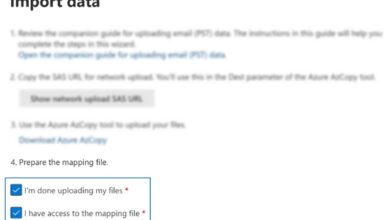Introduction
Node.js has an event-driven and asynchronous nature and is already lightning fast. The modern web, on the other hand, requires more than just speed. Using Node.js to build your next web app means you must take every precaution to ensure that your app loads as quickly as possible. If you’re a node.js development company, this article will be your ultimate guide to making your development process faster!
1. Caching to the Rescue
- Using caching, a server is spared from having to perform the same function over and over again to get the same result.
- In the event the same report is going to be used several times, shouldn’t it be possible to eliminate the requirement to generate it from scratch each time?
- Isn’t it reasonable to expect the same jobs to be processed more quickly? It’s possible to reduce the response time of actions or commands by using caching options.
- Caching data and information in Redis for speedy retrieval and use can help a lot in speeding up the processing of applications. A node js development company must make full use of caching.
- The posts array can be cached and cleared at regular intervals if you don’t post too many blog entries. It’s possible to do this by using the Redis module, for example, to do this, your server must have Redis installed.
- To store key/value pairs, you can use a client called node Redis.
- So, to begin, we’ll see if the postings are in the Redis cache first. Posts array will be delivered from the cache if necessary. If this is the case, we’ll fetch the data from the DB and store it locally. We can also clean the Redis cache periodically to make room for fresh stuff to be fetched.
2. Make Use of gzip Compression
- The majority of servers today support gzip to ensure that replies are compressed before being sent to a browser as and when the resources are requested by it.
- By minimizing the amount of time between responses, the web program can run more quickly.
- This means that Gzip compression can be used to compress both response data and request data transmitted to remote services.
- As a result of its dual purpose, the web application as a whole runs more quickly. Static resources that are not compressed using gzip will take longer to retrieve.
3. Try Going asynchronous
- This means that no more than one process can be running at a time in the Node.js environment.
- As a result, the synchronous components of this technology can cause the entire app to stall while it waits for the execution to complete.
- This can have an impact on both quality and speed. Avoiding the synchronous technique is possible, but it won’t help much if you utilize an external library that has to block calls (as is almost always the case).
- Using an asynchronous API or an external library, the remaining code can be executed while waiting for the execution to complete, thereby avoiding the need to wait. Node.js makes use of libuv, an asynchronous library that has a fast event loop and a way to conduct blocking operations.
- For non-blocking and blocking activities, Libuv combines an event loop and a thread pool.
4. Use a Real-Time Monitoring Tool to Keep an Eye on Things
- Your to-do list should include selecting a well-known provider who offers an application monitoring tool.
- Errors and blogs can harm a web application’s performance and the amount of effort put into its development.
- As a result, a comprehensive infrastructure for monitoring and maintenance must be put in place ahead of time.
- In the case of NodeJS, the following are some useful tools to have on hand: Monitis, Newrelic, Ruxit, Stackify, and LogicMonitor.
- These tools can keep track of user behavior and offer you thorough metrics, so you may identify and eliminate any elements that are slowing down your application’s speed.
- To put it another way, these real-time performance measurement tools allow for intelligent analysis.
5. Rendering on the Client Side
- MVC frameworks such as AngularJS, MeteorJS, and BackboneJS, among others, have grown in popularity in recent years, making it feasible for developers to build single-page apps that run quickly and reliably.
- APIs that allow the client to send JSON responses directly to the server can be exposed by these strong frameworks.
- Thus, bandwidth is saved and latency is also reduced as a result of this. When working with NodeJS, it’s extremely beneficial to employ client-side rendering.
Conclusion
NodeJS development will go much more quickly if you follow the aforementioned advice and put it into practice. Going parallel, going session less, using binary modules, and employing a V8 JavaScript engine can all help your development process go forward. If you’re in custom software development services, this will allow you to construct additional software applications with the help of NodeJS’s unique capabilities, which have achieved widespread popularity. Contact us by phone or email if you have any questions or would want to discuss your needs for a fantastic website or application.
We’re here to help, and we’ll do it with cutting-edge technology and a team of experts!









